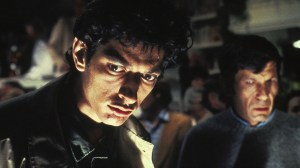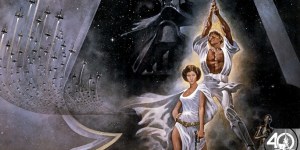It’s just one year until the Justice League movie, in which it’s generally assumed DC’s nascent movie universe will deal with the fallout from Superman’s death at the end of Batman v Superman: Dawn of Justice.
Videos by ComicBook.com
The movie will be released on the 25th anniversary of Superman’s death in the comics — which seems like it’s unlikely to be a coincidence, but it’s hard to know for sure.
Superman’s death was a unique event — and one that DC and other publishers tried again and again to recapture the spirit and success of, to varying degrees of success. It happened, as many longtime fans know, because the writers and artists behind the four monthly Superman series being published at the time couldn’t do what they wanted to.
“When we got together in ’92 to outline the books that included Superman #75 and Adventures of Superman #500…well, originally we were going to plan the wedding of Clark Kent and Lois Lane,” veteran Action Comics writer Roger Stern told ComicBook.com. “We’d started setting that up in Superman #50, when Clark proposed and Lois said, ‘Yes.’ But the wedding scenario was put on hold, because Warner Brothers had gotten the green light to produce the Lois & Clark: The New Adventures of Superman television series for ABC. They didn’t mind us having Clark and Lois marry, just as long as they got to set the stage for the wedding first on TV. So we had our work cut out for us. Everything that we’d been working toward had to be delayed.”
Ultimately it was delayed until 1996’s Superman: The Wedding Album, by which time a number of the creators involved in planning the marriage were no longer working on the comics regularly. Stern was among a number of notable Superman veterans who returned to work on the one-shot, which was recently reprinted as DC Comics Presents: Superman: Lois & Clark 100-Page Super Spectacular.
The story has been well-covered in previous interviews and on the bonus features for the Blu-ray and DVD release of Superman: Doomsday, an animated film loosely based on the Death and Return of Superman story arcs from the comics. You can see that documentary below. The decision to kill Superman, the story goes, started with longtime writer/artist Jerry Ordway, who used to routinely joke “we could always kill him” when the creative teams were stuck for story ideas.
“Not too surprisingly, there was a lot of chaos on the first day of the Summit, with all of us brainstorming new ideas. Somewhere in there, Jerry tossed out his usual ‘We could always kill him’ gag. And someone else…Dan [Jurgens]? Louise [Simonson]? [Jon Bogdanove]? I don’t remember now. Someone else chimed in with, ‘Yeah, if we can’t marry him, let’s kill him,’ or words to that effect,” Stern explained. “At that point, Mike Carlin, showing great editorial acumen, replied, ‘All right, wise guys, suppose we kill him. What happens next?’…That was when the ideas really started flowing. How does the city react when Superman dies? How does the world react? How does Lois react? Don’t forget, she was one of a handful of people on the face of the Earth who knew that Clark Kent was Superman. She was engaged to him. And now … she still can’t tell anyone, because it would endanger his parents. Within a few hours, we had so many ideas, that we couldn’t not do the story.”
Current Action Comics writer Dan Jurgens, who wrote and drew the actual Death of Superman issue released twenty-four years ago today, remembers it somewhat differently: in his mind, he went into the room ready to pitch Ordway’s half-joking idea as a real thing.
“I walked into that meeting with two ideas written on a notebook, one being Superman’s death and another being the idea of a truly physical monster that would trash Metropolis and give Superman a run for his money. Up to that point I’d been frustated by the lack of physical villains for Superman,” Jurgens told ComicBook.com. “Now, keep in mind that we had fifteen people in the room, which could sometimes get quite loud. We had also talked about the idea of doing Superman’s death at previous meetings. I mentioned it during the meeting in question, as did Jerry. As things got loud it was sometimes hard to hear over everyone. We were sometimes emotional about those stories.”

“Later, as everything came together, the idea for the phyisical foe and death of Superman merged into one idea and Doomsday was born,” Jurgens added. “Mike Carlin wrote ‘Doomsday for Superman’ on the board and I remember saying, ‘Doomsday. Has anyone ever used that for a name?’”
Of course, Superman didn’t stay dead for long, and within about a year he was back in action. Along the way, though, the creative teams introduced a number of new characters and concepts that would inform the next decade or so of DC Comics. When it came time to bring the Man of Steel back to life, the creative teams each brought a different “Superman” in to star in their book. Each of the four — The Eradicator, Superboy, Steel, and Cyborg Superman — would go on to play a major role in comics and other media going forward.
Cyborg Superman — the result of a deranged former astronaut named Hank Henshaw bonding with a Kryptonian supercomputer — will appear on Monday’s episode of Supergirl on The CW, for instance. Steel had his own movie (which wasn’t generally well-liked but Steel co-creator Louise Simonson said star Shaquille O’Neal wasn’t as bad as he gets credit for), and the Death and Return version of Superboy is the one seen in the Young Justice animated series, among other things.
On a creative level, the Death of Superman feels in a lot of ways like the culminating event of the post-Crisis on Infinite Earths Superman titles. Since John Byrne’s 1986 The Man of Steel revamp, the Superman books had sold reasonably well, but been acclaimed as some of the best and underrated superhero books in the mainstream market. For much of that time, the majority of the Superman titles’ sales came not from comic book stores but from newsstands — a dynamic that changed decisively and permanently when speculators startes snatching up as many of the Doomsday! issues as they could get their hands on.
The titles continued to be strong throughout much of the ’90s, although a series of mini-events — “The Death of Clark Kent,” the wedding of Lois and Clark and the “electric Superman” stories among them — felt to many like editorial was constantly looking for the next groundbreaking marketing success like The Death of Superman (generally with diminshing returns). it undercuts the reputation of the era with some more serious-minded critics, a number of whom will even claim that the death itself was a marketing stunt from its inception.
That last claim is something that’s provably incorrect, and while we won’t go into that here, checking out the terrific series of podcasts examining this era and its comics, novels, radio plays (yes, really), video games, and more at the From Crisis to Crisis podcast, which looks at Superman from 1985-2005.
The events of the death and return of Superman are a culminating event not for quality reasons, but because nearly every major storyline from 1986 until 1992 played a key role in the Doomsday! and beyond stories. Some were resolved, some merely advanced, and in some cases ideas thought abandoned came roaring back with a vengeance — but in Stern’s prose novel The Death and Life of Superman, it’s made clear that this story — which saw Jerry Ordway, who had been with the rebooted Superman titles from the very beginning, end his run — could easily be seen as a season finale of sorts.
The fact that many of its elements are picking up a renewed sense of urgency and significance to the post-Rebirth Superman titles is a testament to the popularity of the story and the sense of time and place that many readers have when revisiting characters and concepts from that era.
There are a number of different formats you can read The Death and Return of Superman in, although arguably the best is a series of recently-reissued trade paperbacks that include a not-insignificant amount of material for the first time ever. You can get a copy digitally at ComiXology, and of course elements of the story have been adapted into film twice — in Superman: Doomsday from Warner Bros. Animation and in Batman v Superman: Dawn of Justice, currently available on Blu-ray and streaming.








